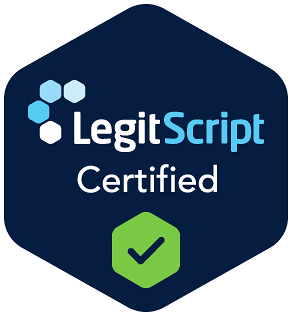
Living with both PTSD and addiction creates a complex cycle where trauma symptoms and substance use feed off each other. Many people find themselves using drugs or alcohol to numb painful memories, only to discover their addiction worsens the very symptoms they’re trying to escape. This dual struggle requires specialized care that addresses both conditions together rather than separately.
Effective treatment for PTSD and addiction exists, but it looks different than approaches for either condition alone. The most successful programs combine trauma therapy with addiction recovery methods, helping adolescents process painful experiences while developing healthier coping strategies. At the Ohio Center for Adolescent Wellness, we offer dual diagnosis treatment for teens with co-occurring mental health and substance use challenges. Understanding how these conditions interact is the first step toward breaking the cycle and building a sustainable recovery plan.
What Is PTSD?
Post-traumatic stress disorder (PTSD) is a mental health condition that can manifest after someone experiences or witnesses a traumatic event. Teens with PTSD often feel like their minds are stuck in survival mode, constantly reliving bits of the trauma through flashbacks, nightmares, or thoughts that just won’t go away. Normal sounds or everyday situations can set off intense fear, even when there’s no real danger. This constant state of being on high alert can be mentally and physically draining, making it hard to trust people or feel safe and secure.
Sometimes, PTSD and addiction get all tangled up as a way for people to cope. The heavy burden of old trauma can push teenagers to look for a way out, often through substances or habits that just numb the pain for a bit. What starts as a quick escape can quickly turn into a full-blown dependency, adding even more problems. To truly break free, you need to tackle both the trauma and the addiction, because trying to fix one without the other rarely sticks.
What Is A Dual Diagnosis?
When someone has a dual diagnosis, it means they’re dealing with both a mental health issue and a substance use problem at the same time. These two often play off each other, which can make getting better a lot tougher than if you were just treating one. For instance, someone with PTSD might use alcohol or drugs to try to calm their anxiety, but then the addiction makes their PTSD symptoms worse over time. It’s like the two problems get all mixed up, with each one making the other stronger.
How Are PTSD And Addiction Linked?
When people struggle with PTSD and addiction, it’s often because they’re trying to cope and self-medicate. The distress from trauma can trigger strong cravings, and it becomes a vicious cycle where bad memories and substance use just feed each other. Research shows a clear link between PTSD symptoms and wanting to use substances.
On a brain level, long-term trauma changes how our brains handle stress and rewards. Plus, addictive substances mess with our reward systems even more, making it harder for our brains to stop cravings and fear. This helps explain why they pop up together and make each other worse.
Being in risky situations linked to substance use can also lead to new trauma, making both emotional pain and drug habits deeper. This back-and-forth pattern makes it clear why people with substance use disorders are more likely to also have PTSD.
What starts as a way to get relief often becomes a steady habit, keeping both trauma symptoms and cravings going. When trauma flares up, substance use might increase, leading to dependence. And on the flip side, withdrawal can feel a lot like trauma symptoms, causing people to use again. This traps them in a tough situation where it’s hard to treat one without the other.
What Are The Signs And Symptoms Of PTSD?

PTSD shows up in lots of different ways, often messing with daily life and relationships. It’s common to see it alongside substance addiction, as people often use drugs or alcohol to deal with intense feelings. Here are common signs and symptoms:
- Intrusive memories: Reliving the trauma through vivid flashbacks, nightmares, or intrusive thoughts that just won’t go away.
- Avoidance: Shying away from people, locations, or activities that bring back memories of the event, even if you used to enjoy them.
- Negative mood changes: Lingering emotions of guilt, shame, or a sense of detachment from others, as if their experiences are inherently misunderstood.
- Hyperarousal: Constantly feeling on edge, easily startled, and prone to anger outbursts triggered by minor issues.
- Emotional numbness: Loss of interest in hobbies, emotional numbness, or difficulty experiencing joy.
- Self-destructive behaviors: Escaping painful memories or feelings by resorting to alcohol, drugs, or reckless behaviors.
- Physical reactions: You might get sweaty, nauseous, or have a racing heart when something reminds you of the trauma.
What Are The Signs And Symptoms Of Addiction?
Addiction can creep in gradually, changing how a person thinks, behaves, and relates to the world. For those with PTSD, substances might start as a way to cope but can quickly spiral into dependency. Here are key signs to watch for:
- Loss of control: Consuming a substance in larger quantities or with greater frequency than initially planned.
- Failed attempts to quit: Frequent unsuccessful attempts to reduce or cease use.
- Time spent obsessing: All they can think about is getting, using, or recovering from the substance.
- Neglected responsibilities: Substance use negatively impacts work, school, and relationships.
- Risky behavior: Making risky choices, like driving drunk or having unprotected sex, while under the influence.
- Withdrawal symptoms: Feeling sick (shaking, anxious, nauseous) when you’re not using.
- Isolation: Avoiding friends and family because of drug or alcohol use.
- Increased tolerance: Needing more to feel the same effects over time.
- Using substances to cope: Using substances to dull the pain from PTSD, stress, or emotional distress.
What Does Integrated Treatment For PTSD And Addiction Include?

Effective treatment for co-occurring PTSD and addiction requires addressing both conditions simultaneously rather than separately. Integrated approaches recognize how these struggles interact and create personalized paths to recovery. Here’s what quality treatment typically involves:
- Trauma-informed therapy: Evidence-based approaches like EMDR or prolonged exposure therapy help process traumatic memories safely.
- Addiction counseling: Combines relapse prevention strategies with coping skills for managing cravings and triggers.
- Dual diagnosis groups: Supportive environments where people discuss both PTSD and addiction without feeling split into separate issues.
- Medication management: When appropriate, prescriptions may help stabilize mood, reduce cravings, or ease PTSD symptoms.
- Mind-body practices: Yoga, mindfulness, or breathing exercises help regulate the nervous system’s stress response.
- Safety planning: Tools to handle crises without returning to substance use when PTSD symptoms flare up.
- Social reintegration: Gradual rebuilding of healthy relationships and daily routines damaged by addiction and isolation.
- Aftercare planning: Ongoing support through alumni programs or community resources to maintain progress.
Which Therapies Target Both PTSD And Addiction?
Several therapy approaches effectively address the complex relationship between PTSD and addiction simultaneously. These methods recognize that treating one condition while ignoring the other often leads to incomplete recovery. Here are some of the most effective dual-focused therapies:
- Seeking Safety: A present-focused model that teaches coping skills for both trauma and substance abuse while emphasizing personal safety.
- Trauma Recovery and Empowerment Model (TREM): Group therapy specifically designed for trauma survivors with addiction issues, focusing on empowerment and self-worth.
- Cognitive Processing Therapy (CPT): Helps modify unhelpful beliefs about trauma while developing healthier responses to triggers that might lead to substance use.
- Concurrent Treatment of PTSD and Substance Use Disorders Using Prolonged Exposure (COPE): This therapy mixes exposure therapy for PTSD with ways to prevent relapse.
- Mindfulness-Based Relapse Prevention: Combines mindfulness techniques with regular addiction treatment modalities to help with cravings and trauma.
- Dialectical Behavior Therapy (DBT): It helps you manage your emotions when PTSD symptoms pop up, so you don’t feel the need to use substances.
- Integrated Group Therapy: It’s all about how mood and substance use are linked for folks dealing with both.
How Long Does PTSD And Addiction Dual Diagnosis Treatment Last?
When someone’s dealing with both PTSD and addiction, their treatment plan can look pretty different. Residential programs usually run for about 30-90 days, while outpatient programs can go for 3-12 months. How long someone stays in treatment depends on things like how complex their trauma is and their history with substance use. And don’t forget aftercare. Things like ongoing therapy and support groups are super important for staying on track with recovery. The length of treatment depends on each client’s progress and set goals.
What Happens After PTSD And Addiction Treatment Ends?

Recovery from PTSD and addiction is an ongoing journey. After treatment, structured aftercare with therapy, support groups, and check-ins helps maintain progress. Ongoing trauma therapy (like EMDR or CPT) and addiction recovery support (like 12-step or SMART Recovery) are crucial. Relapse prevention focuses on recognizing warning signs and developing healthy coping mechanisms. Alumni programs offer continued community. The path varies, but consistent management of both conditions, with proper support, leads to lasting change.
Ohio Centers Supports Your Recovery Needs
Ohio Centers offers awesome support for teens dealing with PTSD and addiction, with programs specifically designed for these connected struggles. We use a mix of proven therapies like cognitive-behavioral therapy (CBT) and trauma-focused treatments, plus cool holistic stuff like mindfulness and art therapy, to help them on their path to recovery. If someone has both PTSD and addiction, our integrated programs make sure both are treated at the same time, because untreated trauma can fuel substance use, and vice versa.
We have flexible care options, including outpatient services that allow patients to keep up with daily life. LGBTQ+ teenagers can get specialized help, as our staff are trained to understand the unique traumas these groups often face. Plus, peer-led groups and alumni networks help with long-term recovery, helping adolescents rebuild trust and community after feeling isolated from addiction or PTSD.
You no longer have to struggle with PTSD or addiction alone. Contact us today and join a supportive family that is committed to your recovery and health.


